Invented by Kiron LEBECK, Tadayoshi Kohno, Franziska Roesner, University of Washington
AR technology allows users to overlay digital information onto the real world, creating a unique and immersive experience. However, this technology also presents security challenges, as sensitive information can be easily accessed by unauthorized users. This is where presentation security comes into play. Presentation security in AR applications involves protecting sensitive information from unauthorized access, ensuring that only authorized users can access the information.
There are several methods, systems, and methods for providing presentation security in AR applications. One of the most common methods is encryption, which involves converting sensitive information into a code that can only be deciphered by authorized users. Encryption is a widely used method for securing data in AR applications, as it ensures that sensitive information is protected from unauthorized access.
Another method for providing presentation security in AR applications is authentication. Authentication involves verifying the identity of the user before granting access to sensitive information. This method is commonly used in AR applications that require users to log in before accessing sensitive information.
In addition to encryption and authentication, there are several other methods and systems for providing presentation security in AR applications. These include access control, firewalls, intrusion detection systems, and virtual private networks. Each of these methods and systems plays a crucial role in ensuring that sensitive information is protected from unauthorized access.
The market for methods, systems, and methods for providing presentation security in AR applications is growing rapidly. As AR technology continues to advance, the need for presentation security will only increase. Companies that specialize in providing presentation security solutions for AR applications are poised to benefit from this growing market.
In conclusion, presentation security is a crucial aspect of AR development. Methods, systems, and methods for providing presentation security in AR applications ensure that sensitive information is protected from unauthorized access. As the market for AR applications continues to grow, the need for presentation security will only increase, creating opportunities for companies that specialize in providing presentation security solutions.
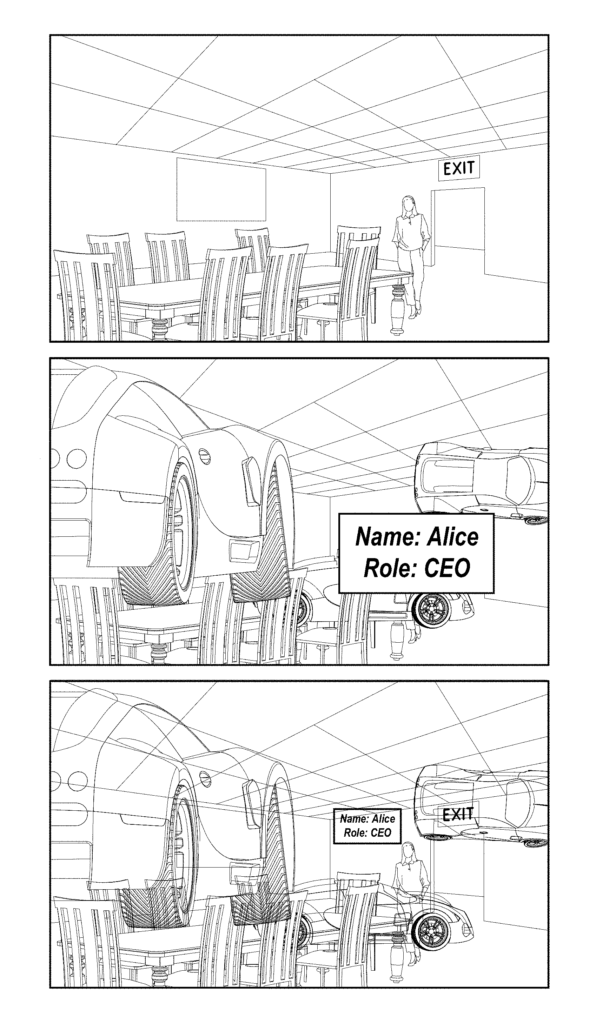
The University of Washington invention works as follows
Some embodiments provide an augmented reality system that provides output security. An operating system of an augmented reality system may provide trusted management support to present virtual objects from untrusted apps running in isolated processes. Untrusted applications still have the ability to create immersive AR experiences with the output security mechanisms enabled. However, their content is limited by the augmented reality systems based on one or several output policies. These output policies are designed to minimize intrusiveness in virtual object presentations. One output policy can be combined so that multiple output policies may be applied to a virtual object. This reduces intrusiveness.
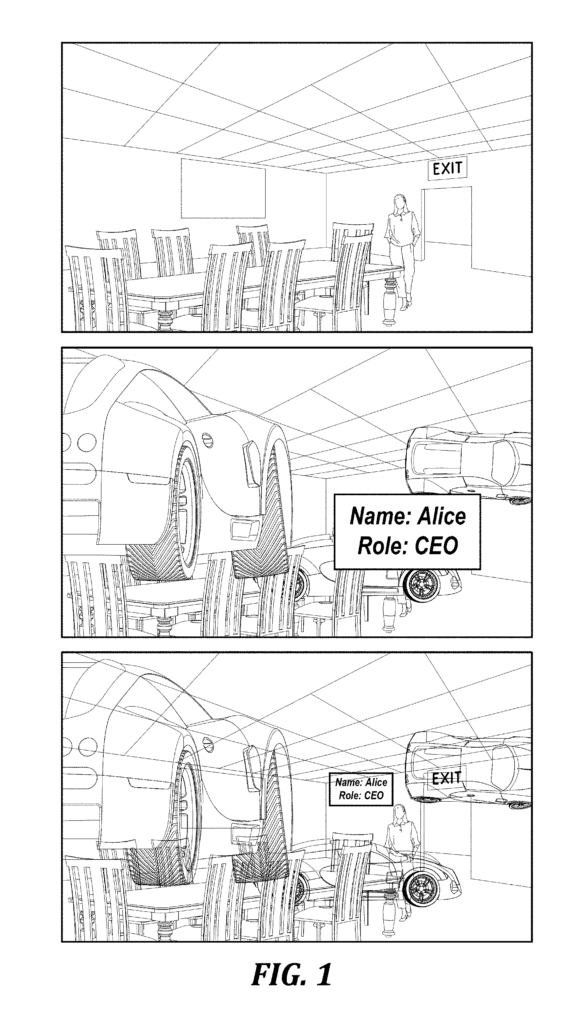
Background for Methods, systems and methods for providing presentation security in augmented reality applications
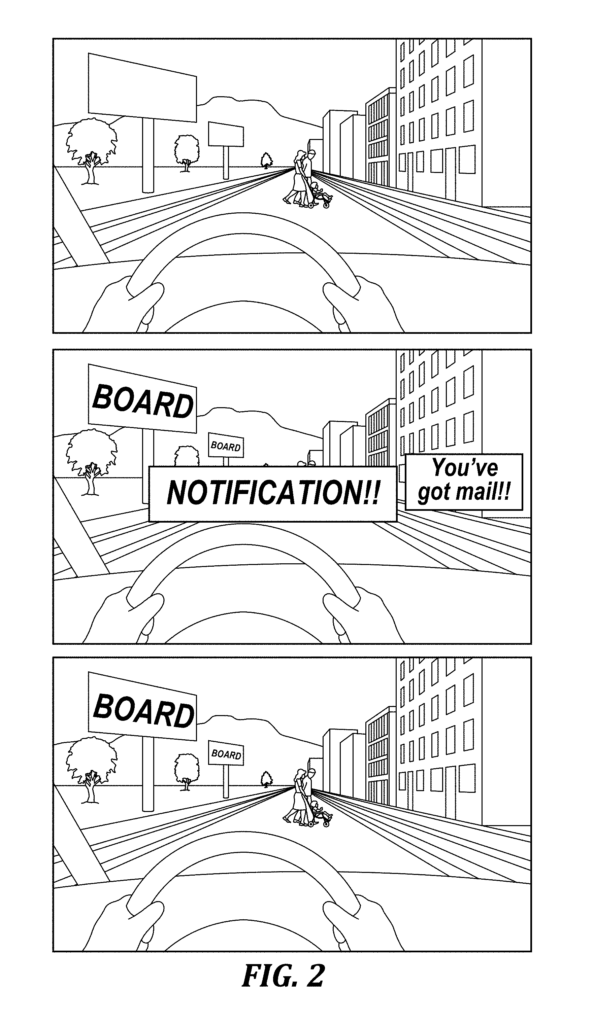
AR technologies can bring great benefits but they also pose security and privacy risks. There is a growing body of literature that focuses on how to mitigate privacy risks arising from AR applications’ need to collect input from multiple sensors, such as cameras. However, this literature doesn’t address the additional issue of security risks associated with AR output. AR applications’ ability to alter the user’s world view is a risk. These risks are especially important for immersive AR systems such as HMDs or car windshields. Users cannot disengage from their devices easily if security concerns arise.
Imagine driving a car equipped with AR-enabled windshields to illustrate the security risks associated with AR output. This technology could be used to visually highlight lane markers and prevent accidental lane drift. It can also display turn-by?turn driving directions overlaid on the road. And it can warn the driver about impending collisions. These tasks can be performed by an AR system in multiple applications or separately. These applications have their benefits, but they can also be dangerous without proper output safeguards. A malicious or buggy AR app could obscure real-world pedestrians or overlay misleading information on real road signs. It also might obstruct the virtual content of AR applications such as collision warnings and other important safety alerts. HMDs that are worn by a pedestrian could have similar problems. For example, an HMD that blocks the user’s view from a tripping hazard, or oncoming car could be an HMD application.
We know of no industry-specific AR platforms that are specifically designed to reduce the security risks associated with output. It is up to the applications to generate safe output. AR systems don’t enforce any output policies. This responsibility should be shared with developers of malicious, vulnerable or buggy code. Today’s AR platforms can not control the output of individual applications, so they cannot manage conflicts between multiple applications. HoloLens solves this problem by not supporting multiple immersive AR apps running simultaneously on a full-screen screen.
Improving augmented reality systems is necessary to ensure output security even when multiple untrusted applications are running concurrently.” It is desirable to provide output security without affecting overall system performance.
This summary presents a few concepts in a simplified format that will be further explained in the Detailed Description. This summary does not identify the key features of claimed subject matter and is not meant to be used to determine the scope of claimed subject matter.
In some embodiments, the system is for providing an augmented-reality presentation. The system includes at least one augmented truth platform device and one augmented reality display device. The augmented truth platform device is equipped with at least one processor and can process a request for a presentation of a virtual object. It uses one or more policies to evaluate the request; then presents the virtual object using at least one of the augmented reality presentations devices. If one or more policies have been violated, the augmented reality platform device alters the state of the virtual objects to conform to the violated policies. Finally, it renders the altered virtual object using at least one augmented realities display device.
In some embodiments, an information presentation method that ensures output security is provided. Received is real-world object information that indicates the presence of an augmented reality device. Adjustment of a presentation filter for virtual data is made. This involves: Evaluating a projected presentation result of presenting virtual information in light real-world object info using a policy; and responding to determining that the policy was violated by the prediction presentation result, updating the presentation filters to be applied to virtual information to reduce intrusiveness based on the violation of the policy. Based on the presentation filter, the virtual information is presented.
In some embodiments, the system is for providing an augmented-reality presentation. The system includes at least one augmented truth presentation device and an augmented reality platform. The augmented truth platform device includes at least one processor as well as a non-transitory computer readable medium with computer-executable instruction stored on it. These instructions, when executed by the processor, cause the operating system and untrusted apps to be provided by the augmented reality device. The operating system can control access to at least one of the augmented reality presentations devices and manage a number of virtual objects that will be presented by the at most one augmented reality present device. Further, the operating system can receive a request from a first trusted application to present a virtual object. It can also receive a second request to present another virtual object from a second trusted application. The operating system can cause at least one augmented truth presentation device to present both the first and second virtual objects. The execution of the first and second untrusted applications is done in separate processes.
DESCRIPTION DU DRAWINGS
The above-mentioned aspects and many of its attendant benefits will be more easily appreciated if the same are referred to the following detailed description in conjunction with the accompanying illustrations:
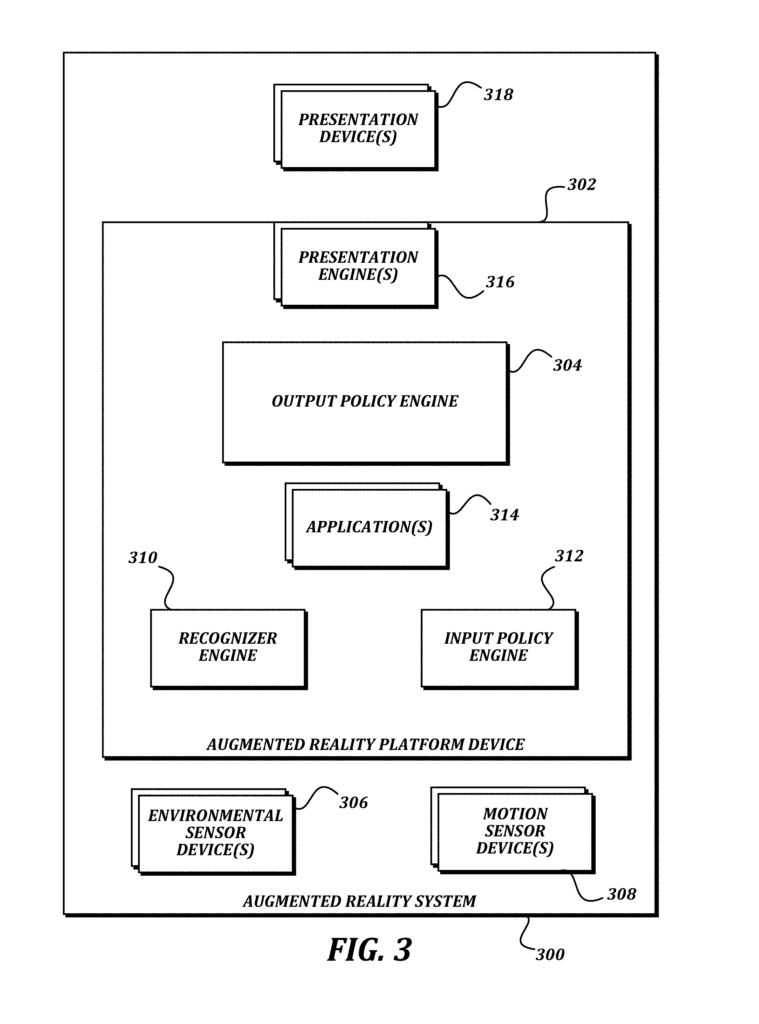
FIG. “FIG.
FIG. “FIG.
FIG. “FIG.
FIG. “FIG.
FIG. “FIG.
FIG. “FIG.
FIGS. 7A-7E are charts showing the results of testing a prototype for an embodiment of the Augmented Reality System 300 using the policies described in FIG. 4; and
FIG. “FIG.
In some embodiments, the present disclosure provides an augmented reality system that includes output security as an explicit, top-class goal. The threat model for embodiments of this disclosure states that portions of the augmented reality system can be trusted but not the AR applications running on it. Untrusted applications can still create immersive AR experiences with the output security mechanisms enabled. However, their visual content is limited by the platform that is based on one or several output policies.
Some embodiments of this disclosure provide an AR output policy specification frame that allows policy writers the ability to specify (1) the condition under which the policy will be violated (e.g. when a virtual person is obscured by a real-world object) and (2) the action to take (e.g. make the virtual object partially transparent). Some embodiments of the policy framework are constrained to allow for composable policies, and limit buggy or malicious policies’ potential performance.
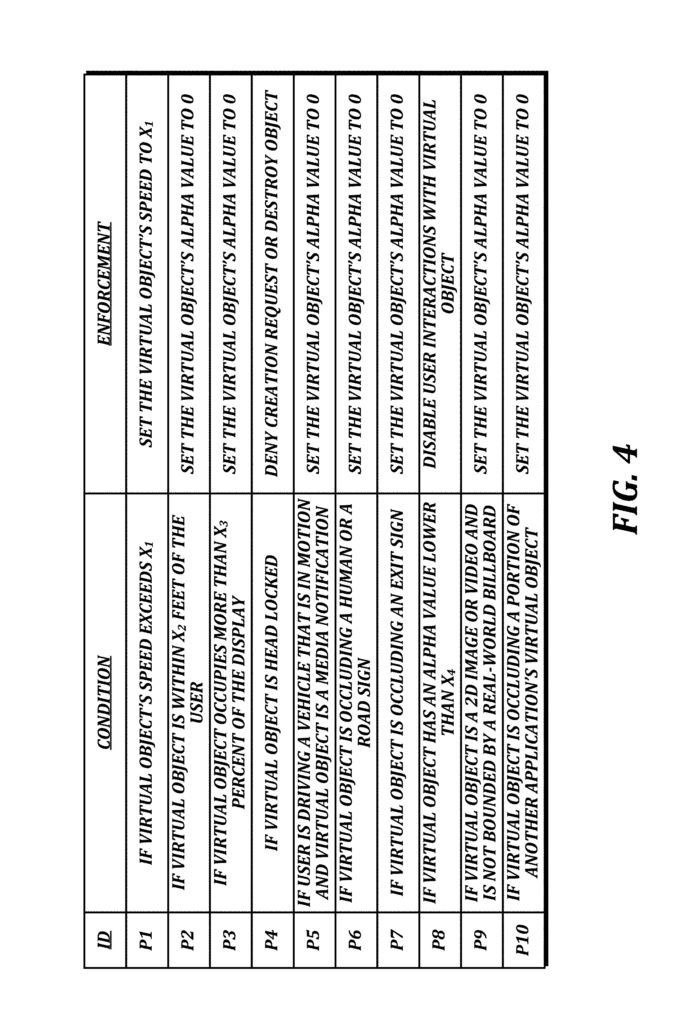
Click here to view the patent on Google Patents.
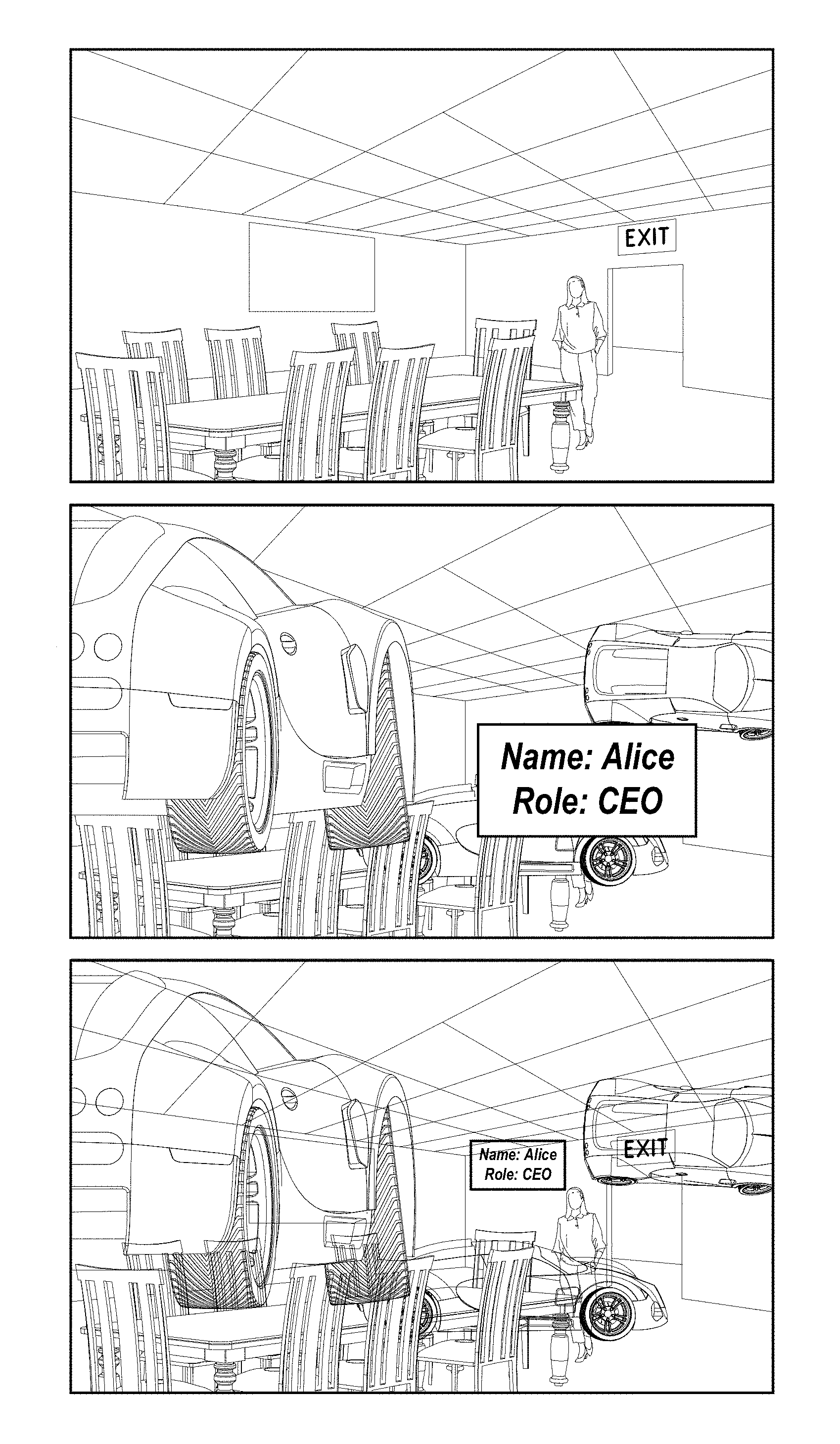
Leave a Reply